Jurriën Timber is an Ideal Match for Mikel Arteta’s Dynamic and Youthful Arsenal
The present moment holds promise for Arsenal fans. Despite not successfully holding back dominant Manchester City in the previous Premier League season, their overall performance indicated significant progress, and early indicators are optimistic for further advancement.
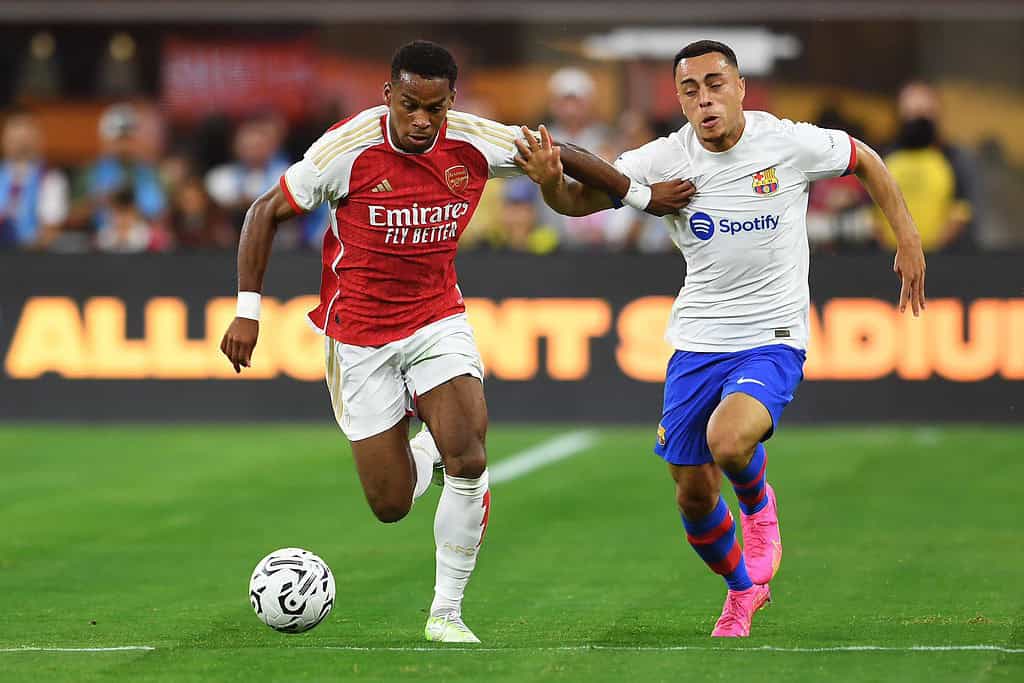
Under the guidance of technical director Edu and head coach Mikel Arteta, an exhilarating team has been constructed, and the characteristics of their pivotal players imply ongoing enhancement in the upcoming years.
With an average age of 25 years and 51 days, Arsenal’s starting lineup in the 2022-23 season was merely 10 days older than the youngest team in the league, Southampton. This achievement adds even more impressiveness to their second-place finish in the previous term. One could argue that they outpaced expectations by contending with City for an extended duration.

Notably, 24-year-old Kai Havertz and former West Ham Captain Declan Rice, also 24, have both joined the ranks.
Read More: Arsenal sign David Raya in £30m deal from Brentford with Matt Turner to join Forest
Strategic Arsenal: Arteta and Edu’s Vision for Youth and Commitment in Transfers
Arsenal’s approach to transfers is quite evident. Arteta places great importance on young players, as he indicated in May of the previous year: “I am deeply appreciative of the contributions of young players, their impact on the team and the club, particularly at this juncture. We intend to support and provide them with precisely what they require because they have earned it. They won’t remain inexperienced forever; the following season will see them more developed than they are now, and you have to commence somewhere with these youngsters.”
Meanwhile, Edu’s preference is for players who possess a strong desire, engagement, and a commitment to the ‘project,’ rather than being motivated solely by salary considerations. “Listen, my initial concern is to ascertain your alignment with this approach, your enthusiasm for it. If that’s in place, then we can have discussions, but not the other way around,” he conveyed to reporters during their summer tour of the United States last year, recounting conversations with a player from Borussia Dortmund. “Oh no, let’s focus on the financial aspect…” No, no, no, no. And at one point, I informed the agent: ‘Gentlemen, I sincerely appreciate your efforts, but this isn’t the path I wish to take.’ And that was it.“
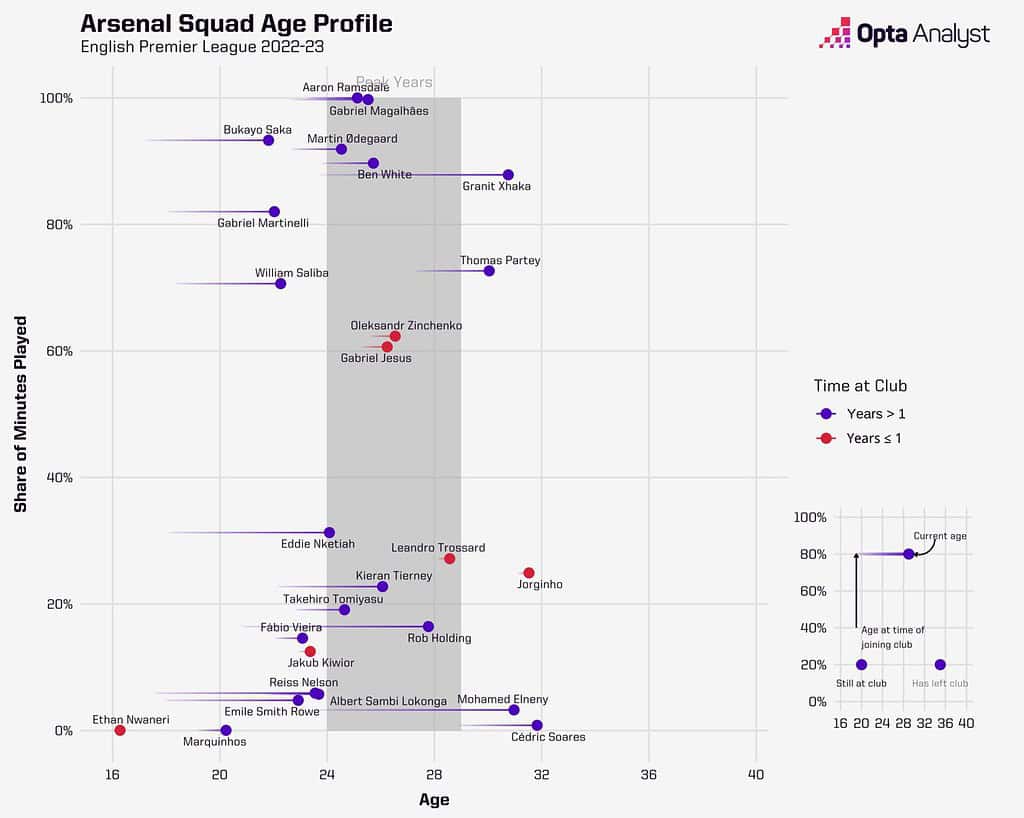
“In the same conversation, he emphasized the importance of ‘characters.’ These would be youthful, ambitious individuals, a description that seems fitting for Timber, who recently transferred from Ajax for a reported fee of potentially £38 million (€44 million).
Former Ajax manager Erik ten Hag remarked, ‘He is yet another exceptional leader developed at Ajax. Beyond his footballing prowess, he possesses the qualities to potentially become a captain.’ Ten Hag shared these thoughts about Timber during his ‘final interview’ with Ajax before his move to Manchester United.
In response, the interviewer made a somewhat hesitant request, saying, ‘Please don’t take him along with you.’
Ten Hag’s slightly uneasy smile likely didn’t offer much reassurance at the time. While Manchester United showed interest in acquiring the young defender for Old Trafford, Ajax remained resolute. The loss experienced by Manchester United translates to a gain for Arsenal.”
Elevating Arsenal’s Defense: Jurriën Timber’s Multi-Faceted Impact and Forward-Thinking Play
However, Timber’s contributions to Arsenal extend beyond his personality and leadership. The Dutch international exemplifies the contemporary interpretation of a center-back.
His attributes encompass dynamism, courage, technical proficiency, and progressive play.
Timber’s ball-handling skills constitute a noteworthy aspect of his repertoire and arguably distinguish him significantly from his peers and fellow central defenders. In the previous Eredivisie season, he achieved a remarkable feat. Among all players, only his teammate Edson Álvarez (798) surpassed Timber’s 780 carries, as he covered a distance of 8,475 meters with the ball throughout the campaign. Once again, Álvarez (9,012m) took the lead in this category.
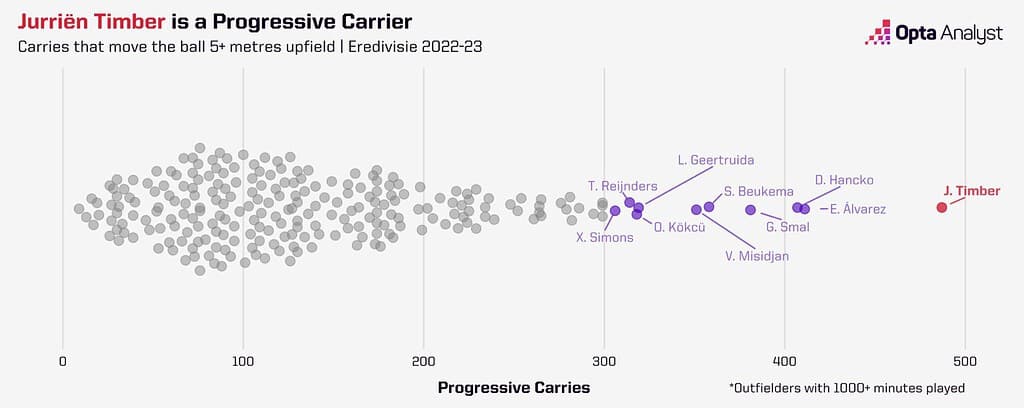
Among those carries, a notable 487 were classified as progressive, a substantial lead of 76 over any other player in the league. Timber’s prowess extends beyond comfort with the ball; he also brings determination and a positive mindset, capable of propelling his team forward even from a defensive position. The cumulative distance covered by his progressive carries reached an impressive 5,037 meters, far surpassing any other individual in the Eredivisie.
However, in line with his Ajax background, Timber’s proficiency in possession is also a dependable asset, a facet that might be somewhat overshadowed due to his forward-driving ability.
In the 2022-23 Eredivisie season, he accrued the highest number of touches (3,129), all while maintaining an exceptional record of ball retention. His possession losses (295) accounted for merely 9.4% of his total touches, marking the second-lowest proportion among all players who had accumulated at least 500 touches. This achievement becomes even more remarkable when considering his inclination towards forward-thinking and attacking playstyle.
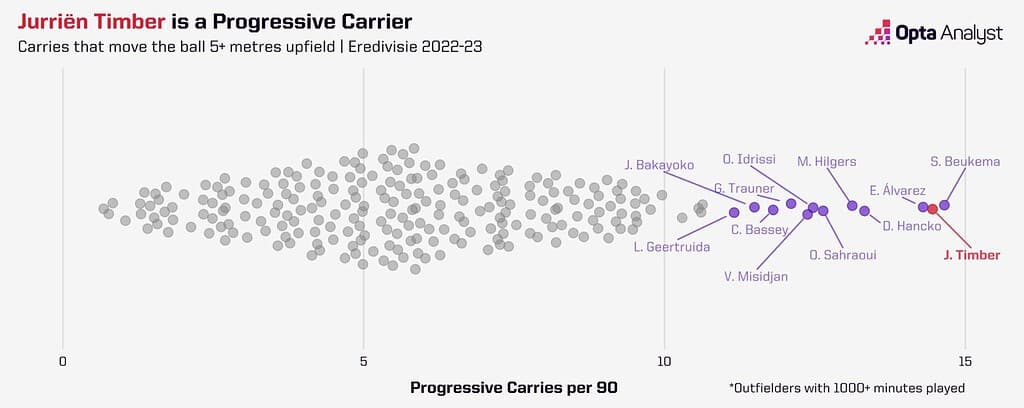
This optimistic outlook also translated into his involvement in open-play sequences generating 22.2 expected goals (xG), a performance that positioned him seventh overall. Remarkably, this placed him ahead of the chief playmaker of the champions, Feyenoord, Orkun Kökcü (21.7). This underscores Timber’s role in fostering opportunities for chances and goals, even if he wasn’t the one directly orchestrating them.
Moreover, Timber is certainly capable of orchestrating such opportunities as well. A noteworthy instance occurred during the 4-2 victory in October against Volendam. Timber’s proactive approach and eagerness to advance resulted in two chances. This exemplified his capabilities perfectly. In the first instance, he carried the ball forward, passing it to Steven Berghuis on the flank, then continuing his forward run to receive a return pass.
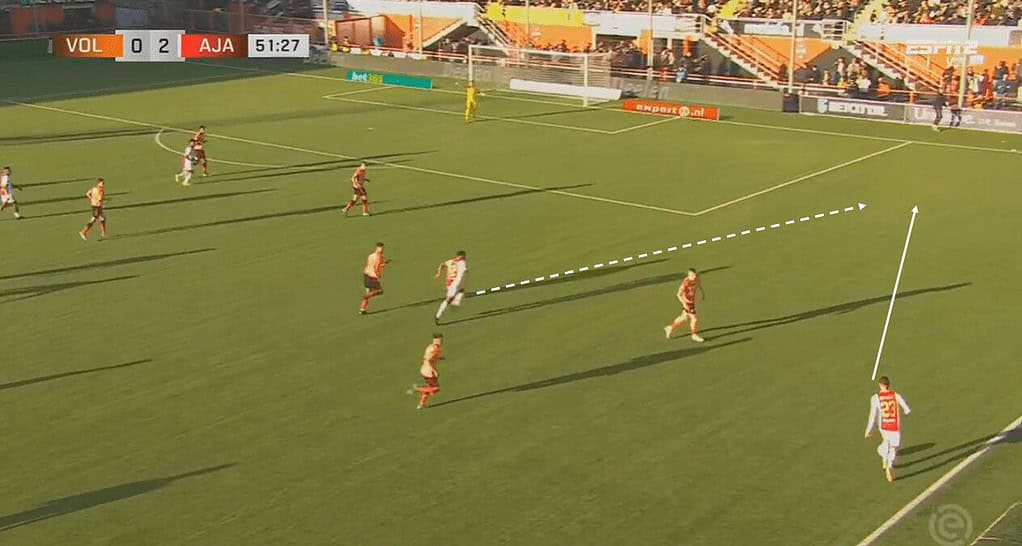
Subsequently, Timber delivered a precise pass back into the box for Berghuis, who, after making a powerful run, struck the left-hand post with his shot.
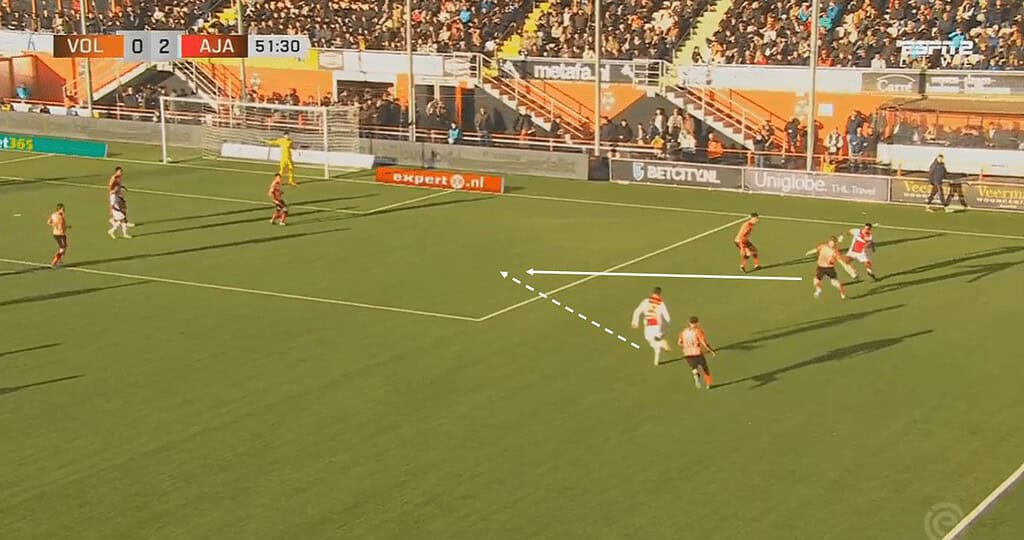
A mere twelve minutes later, Timber gained possession of the ball near the Volendam half and surged ahead, exploiting the opening that had emerged.
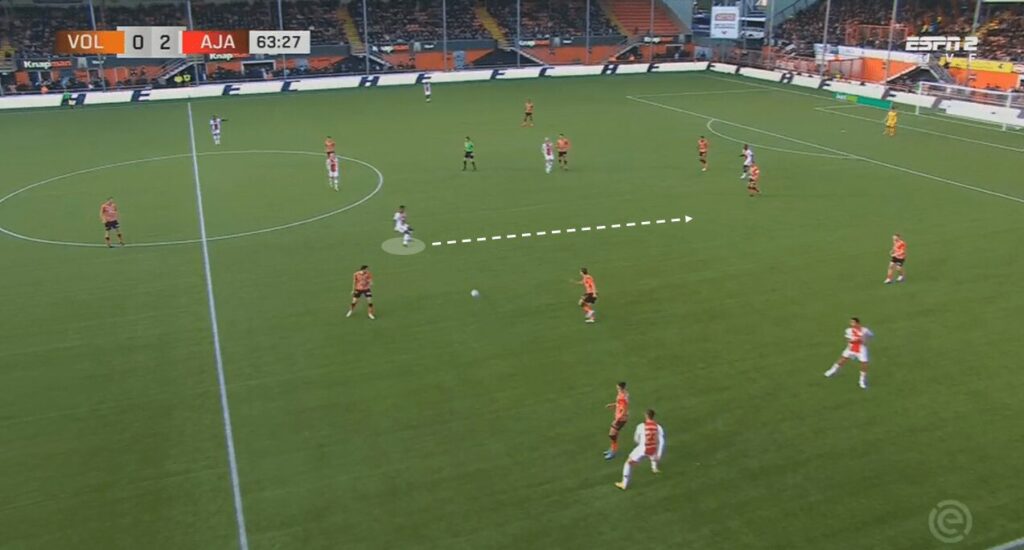
In a seamless motion, without halting his momentum, he skillfully delivered a through ball of impeccable precision into the box for Brian Brobbey, who promptly hammered it into the net.
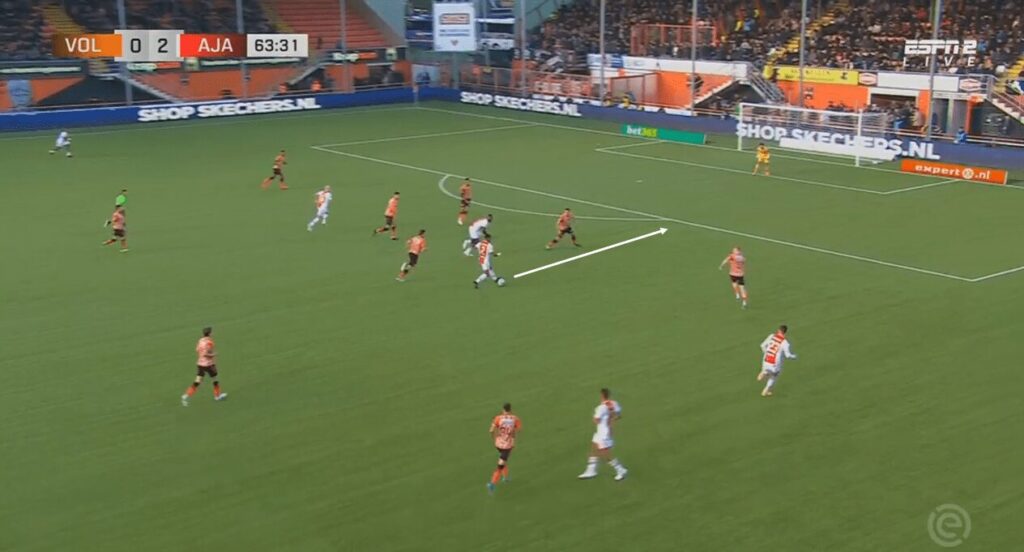
Timber’s Adaptability: Right Fit for Arsenal’s Inverted Full-Back Dilemma?
It’s important to recognize that Timber’s underlying statistics are influenced, to some extent, by the league and the team he’s a part of. The Eredivisie’s level of competition is evidently not as high as that of the Premier League. While Ajax had a season that fell short of their own standards, they would generally anticipate having the upper hand against most opponents. Similarly, Arsenal would hold similar expectations, albeit perhaps to a slightly lesser degree.
Nevertheless, there’s no denying that Timber emerged as an appealing prospect for clubs that embrace a specific style of play. He has operated as a central defender within a four-man backline for Ajax, and in international matches, he’s become accustomed to participating in a back three formation. There have also been instances where he has taken on the role of a right-back, utilizing his natural inclination to push forward – a valuable asset in such a position.
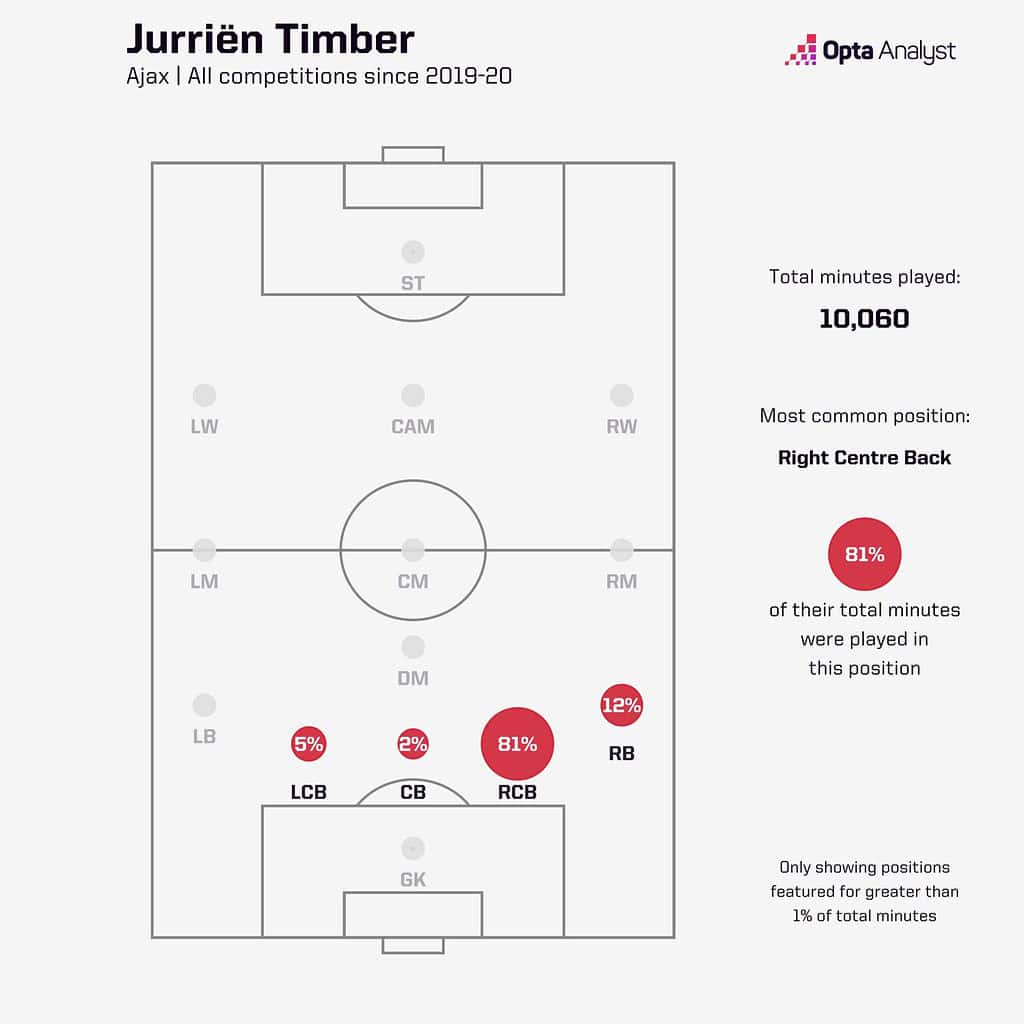
Given his versatility and exceptional technical skills, it’s hardly surprising that Arsenal has pinpointed Timber as the solution to their puzzle of the ‘inverted full-back’ on the right side. Last season, Oleksandr Zinchenko adeptly carried out this role on the left, contributing significantly by moving inward to support midfield dominance while maintaining the option to overlap. There are compelling reasons to believe that Timber could seamlessly slide into a similar role on the right, which would also provide Ben White with the opportunity to transition back into his more innate position as a central defender.
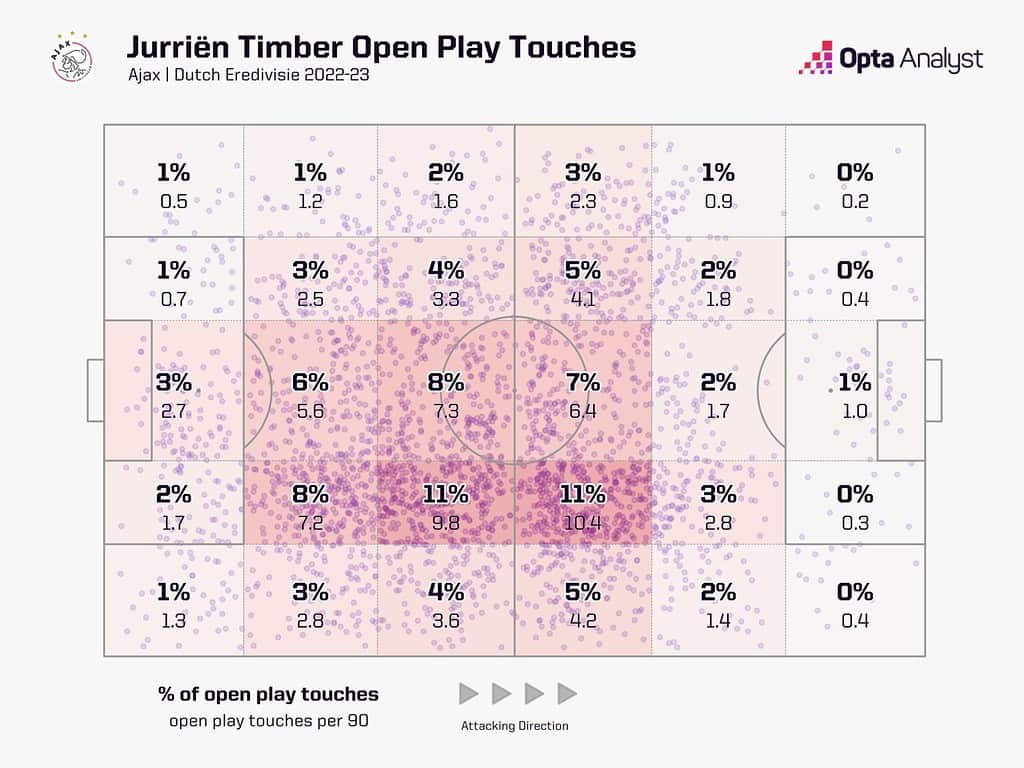
Jurriën Timber’s Journey to Adaptation and Growth at Arsenal
However, Timber is far from being a completed work. While his courage is admirable and a valuable trait, his style of play can carry inherent risks. Transitioning this approach to the more intense environment of the Premier League is certain to pose a challenge that will test his decision-making and on-field maturity.
Reflecting on the Netherlands’ 1-1 draw with Ecuador during the 2022 World Cup, Timber openly assessed his performance, stating, “I believe I held onto the ball for too long.” He referred to his involvement in the sequence leading to the conceded goal, where he was dispossessed in their own half. “We are aware of their aggressive style, and if you try to dribble, they will pursue you. Allowing them to take possession of the ball in that area is not ideal.”
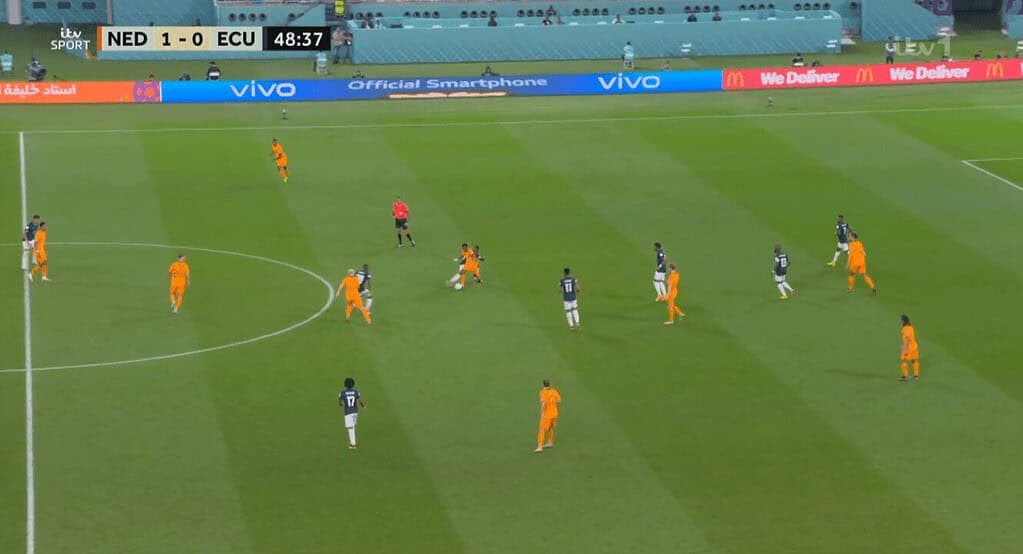
Similarly, Kenneth Perez, a former Ajax and Denmark attacker who now works as a pundit, has voiced critiques about Timber’s defensive performances on a few occasions this year alone. Notably, during the KNVB Cup semi-final in March, Timber displayed a lack of awareness when Santiago Giménez of Feyenoord headed in a cross, with Perez deeming his decision to mark a different attacker as “a foolish choice.”
A month earlier, Timber was physically overpowered by Danilho Doekhi at a corner during a 3-1 loss to Union Berlin in the UEFA Europa League. The resulting goal from his opponent put Union Berlin back in the lead, ultimately contributing to Ajax’s elimination from the European competition.
Perez expressed his perspective on Timber’s challenges, saying, “We always praise Timber: ‘Exceptional player. Oh, how skilled he is. Oh, what a wonderful performance.’ I’m among those who appreciate his style of play as well. But then, when it’s a corner and Doekhi comes in… well, there’s a kid in front of him, right? These are the moments where you need to be resilient, where you must think: ‘This will not happen to me.’ No chance, Timber, no chance.”

The physical aspect of the game is yet another facet in which Timber is likely to face challenges in England. However, on the flipside, many of his weaknesses can be addressed through coaching and improvement. While he might not be the tallest player, there’s potential to enhance his physical strength. As for any perceived immaturity on the field, he has demonstrated self-awareness in his reflections, a positive indication.
Timber acknowledged his occasional subpar performances, stating to ESPN earlier this year, “I do agree that I’ve had a few matches with lesser performances this season. It’s not uncommon, I believe. The most crucial aspect is how you recover and how you continue to improve. In recent weeks, I’ve seen progress in my growth.“
Arteta has established a commendable track record of elevating players and extracting their best potential over the past couple of years. In terms of raw talent, Timber undoubtedly possesses significant ability and appears to be a suitable fit for Arsenal both in terms of style and personality.
As Arsenal looks ahead to the future, Timber holds the potential to serve as the enduring cornerstone for a potentially exceptional Premier League team, provided he is given the time and support to develop.








